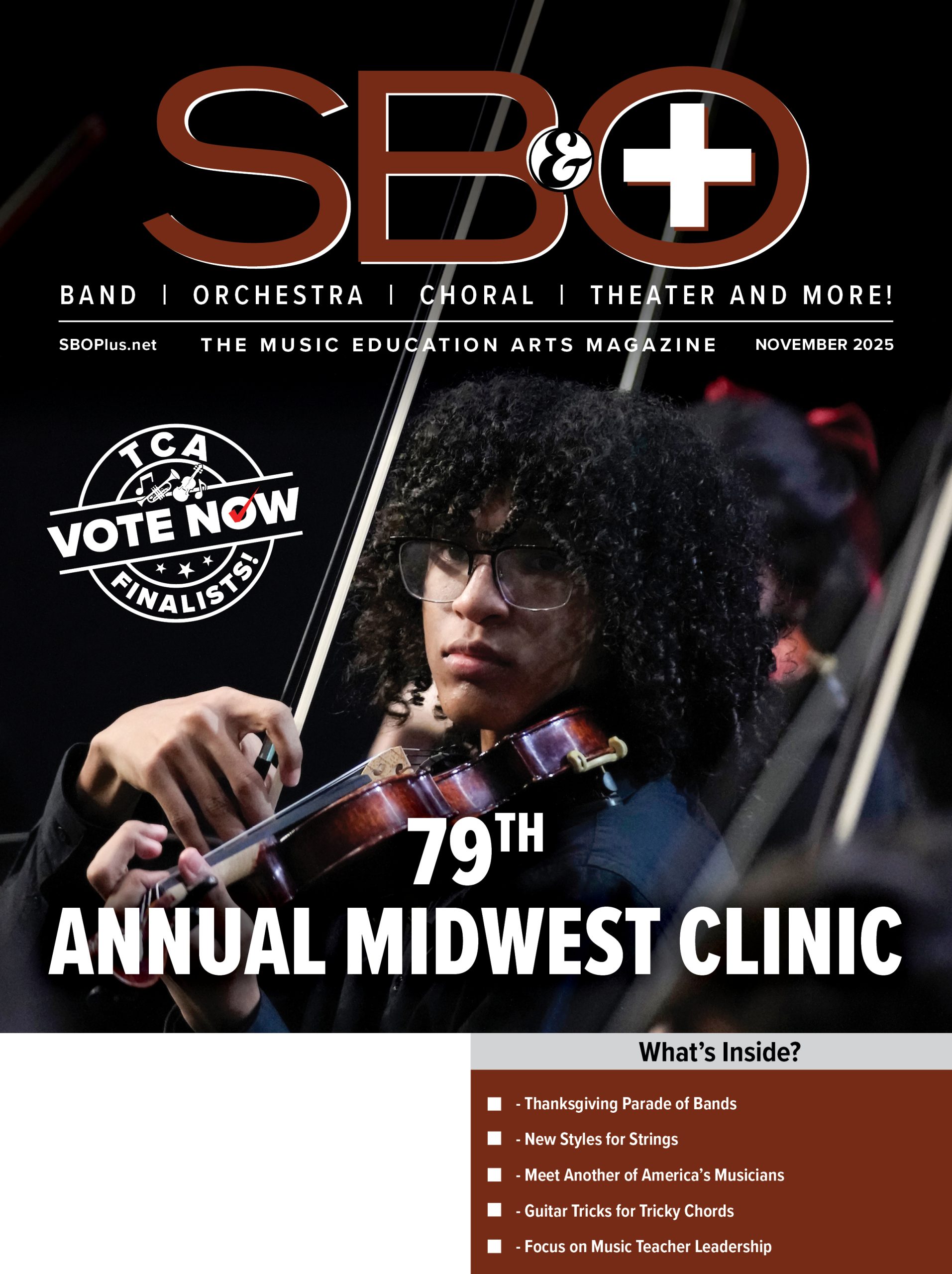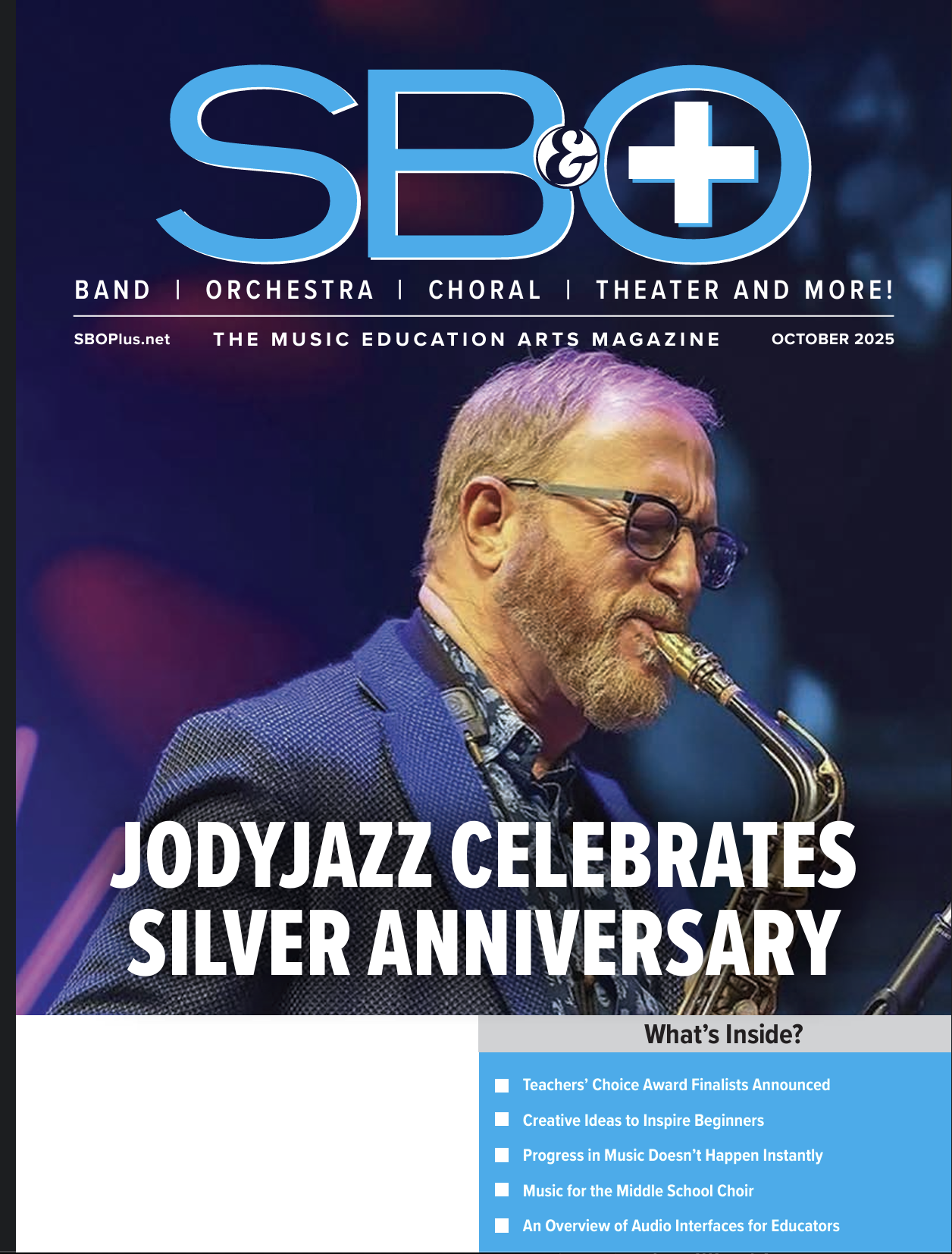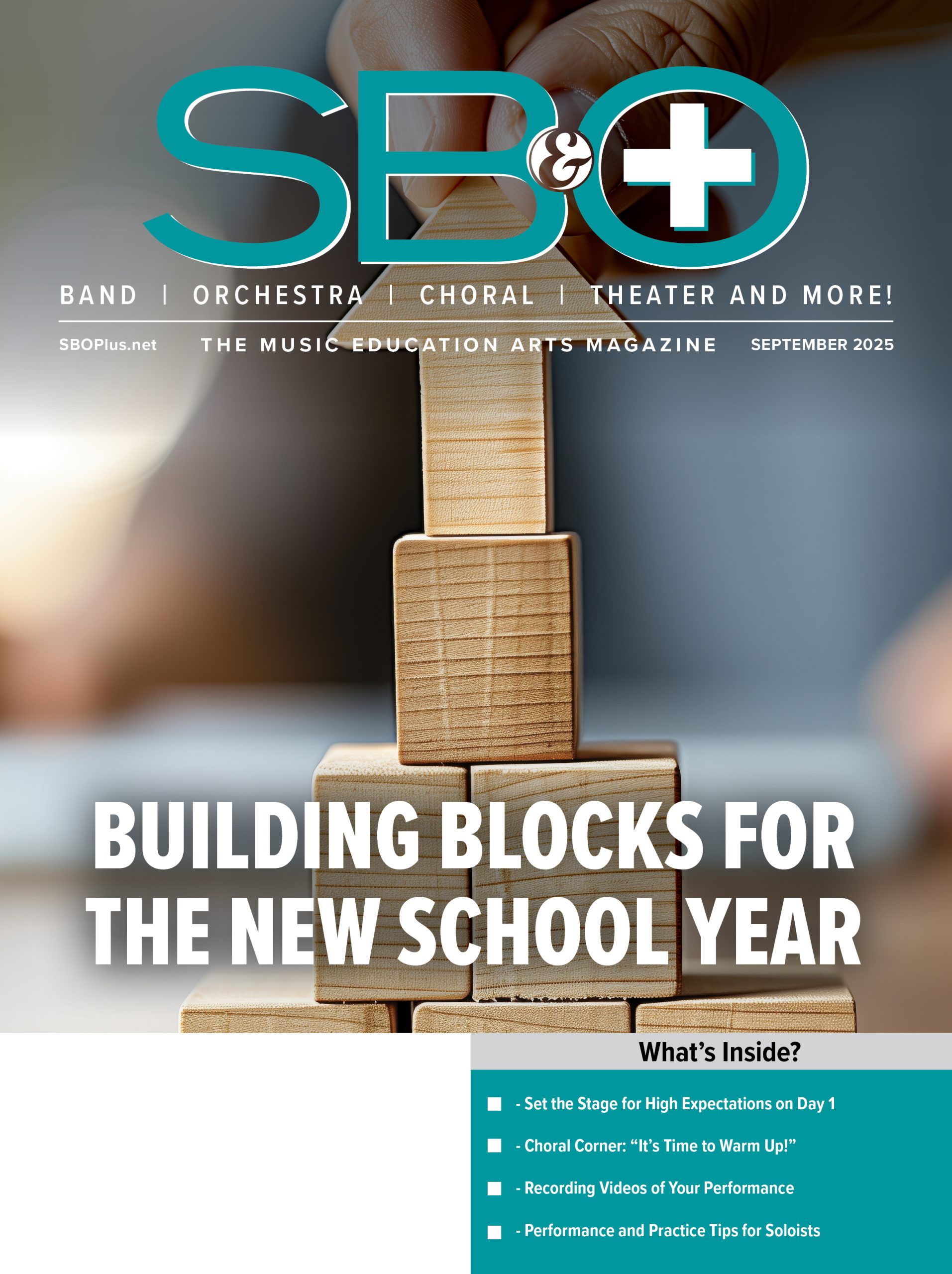 In 2017, I switched from teaching high school guitar and band classes to teaching elementary general music. I remember feeling frustrated with how long it took students to find the chord shapes on fretted instruments compared to the teenagers I was accustomed to teaching. I would walk around the room, place each student’s tiny finger on the third fret of the A string of a ukulele for the C major chord, and yet, without fail, by the time I returned to the white board, half the class had moved their finger to the wrong fret or string. Mary Claxton, from Little Kids Rock, observed my class and advised me to try using different colors of circle stickers to indicate finger placement for various chords. This improved everything.
In 2017, I switched from teaching high school guitar and band classes to teaching elementary general music. I remember feeling frustrated with how long it took students to find the chord shapes on fretted instruments compared to the teenagers I was accustomed to teaching. I would walk around the room, place each student’s tiny finger on the third fret of the A string of a ukulele for the C major chord, and yet, without fail, by the time I returned to the white board, half the class had moved their finger to the wrong fret or string. Mary Claxton, from Little Kids Rock, observed my class and advised me to try using different colors of circle stickers to indicate finger placement for various chords. This improved everything.
Though many people have different ways they use stickers to color code instruments, I’ve always used the Orff color order seen on pBuzzes, Boomwhackers, and chromonote handbells to stay consistent across instruments (where C is red and the rest of the diatonic pitches follow rainbow order). When I first started using the stickers, I marked the entire chord in one color, meaning the C major chord on the guitar would have three red dots placed on their respective frets. This helped students be successful much faster, but it didn’t show them which note was the root, third, or fifth.
After a couple years, I rethought some of my color-coding decisions to better align with the curriculum I use from prodigies.com. When Mr. Rob, the creator of prodigies.com, produced Ukulele Prodigies, he used individual colors for each pitch (i.e. Red C, Yellow E, and Teal G) instead of whole chord colors (i.e. Red C, E, and G). This method allows students to easily identify individual pitches in a chord, play riffs knowing what pitch they’re playing, and follow color-coded sheet music.
Now that I use the same color-coding system across every instrument, self-sufficient students go from one instrument to the next with confidence. On the piano, the white keys are all marked with their rainbow Orff colors. When they go to the guitar, ukulele, and bass, they find the same. When they pick up a pBuzz or chromonote handbells, the color-coded system is there to help them get started right off the bat. With this system, I can say to my students, “We are going to play a C major chord–which is Red C, Yellow E, and Teal G,” and every single person in the room, no matter which of the above instruments they are playing, has access to this. You can use this color-coding system on non-fretted string instruments, as well as most instruments pitched in C.
When this system is consistently applied throughout all the age groups, the students can feel confident transferring their knowledge of one instrument to the next. Instead of feeling anxiety and self-doubt, students can now approach new instruments freely, knowing exactly which notes to play because of their color-coding background knowledge.
The incredibly cute and educational videos on prodigies.com made chord theory more accessible to students as young as kindergarten. Student engagement increased dramatically by following the colorful song charts and videos created by Mr. Rob. Pretty soon, the students at each grade level were comfortable with performing and describing the function of I, IV, and V chord progressions. Once this foundation is laid, more advanced theory becomes easier for students to grasp.
After students fully understand their diatonic pitches in the key of C, I begin introducing accidentals, sharps, and flats. I let students know that F# is the black key or unmarked fret between the Green F and the Teal G. This allows them to easily recognize that the placement of the notes will determine how high or low the pitch is in relation to its surrounding notes.
I am so thankful to Little Kids Rock and all the companies who have provided us with color-coded instruments and music, such as pBuzz, chromonote bells, Boomwhackers, prodigies.com, and Musescore. We have endless opportunities to utilize color-coding as a scaffolding system for students to quickly learn new instruments.
If you would like to learn more about how to lower student anxiety and increase student success when learning new instruments or learning how to read music, check out my upcoming session at Modern Band Summit (July 13-16). During my session I will use the pBuzz and color-coded sheet music (that has been composed and arranged on Musescore) to reduce performance anxiety, promote thoughtful improvisation, and develop the confidence to approach new instruments with ease. Hope to see you in July!
Dorothy currently spends her time performing jazz flute around St. Louis, and teaching a variety of arts classes, including music, sewing, and painting to children and adults.






























